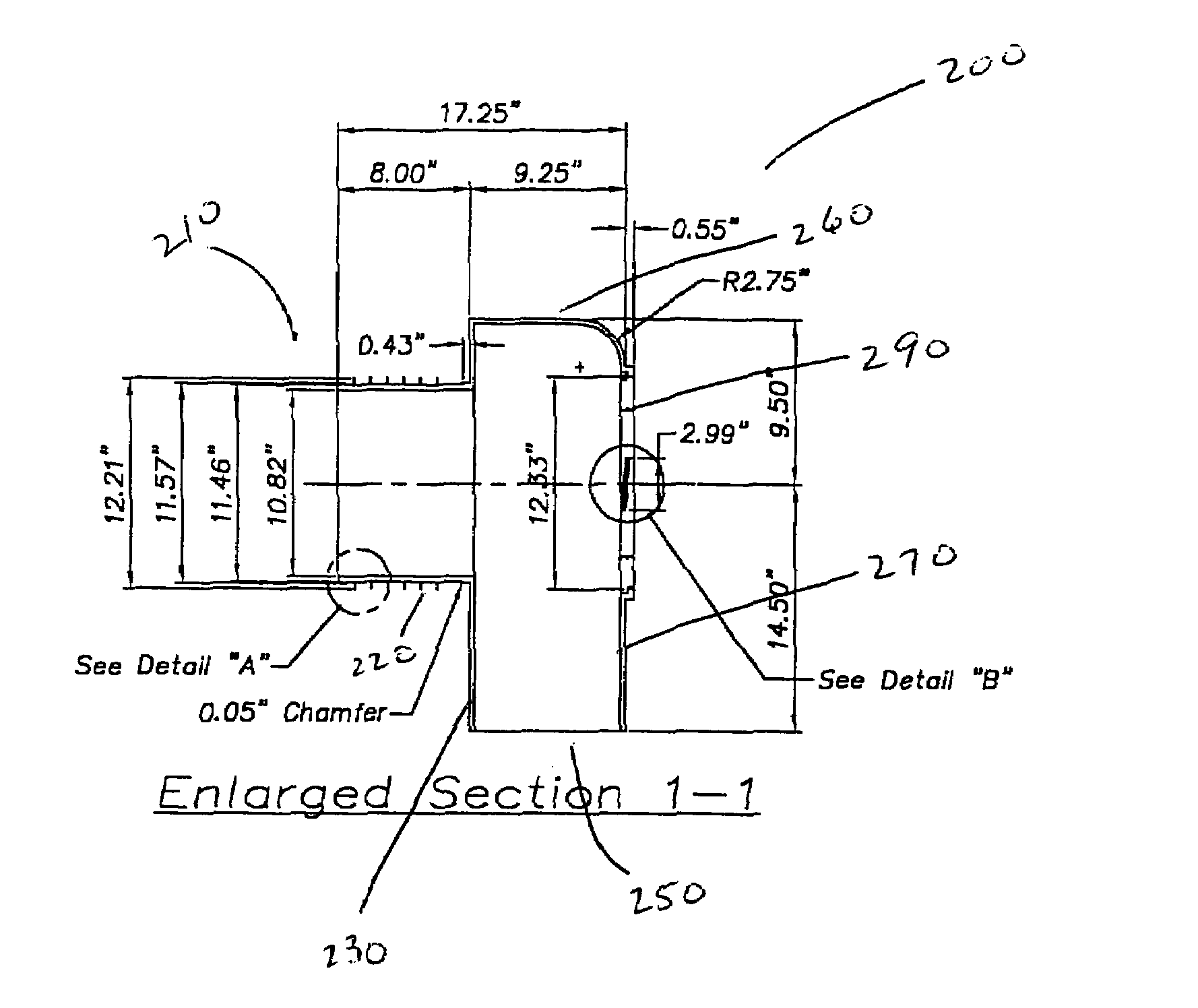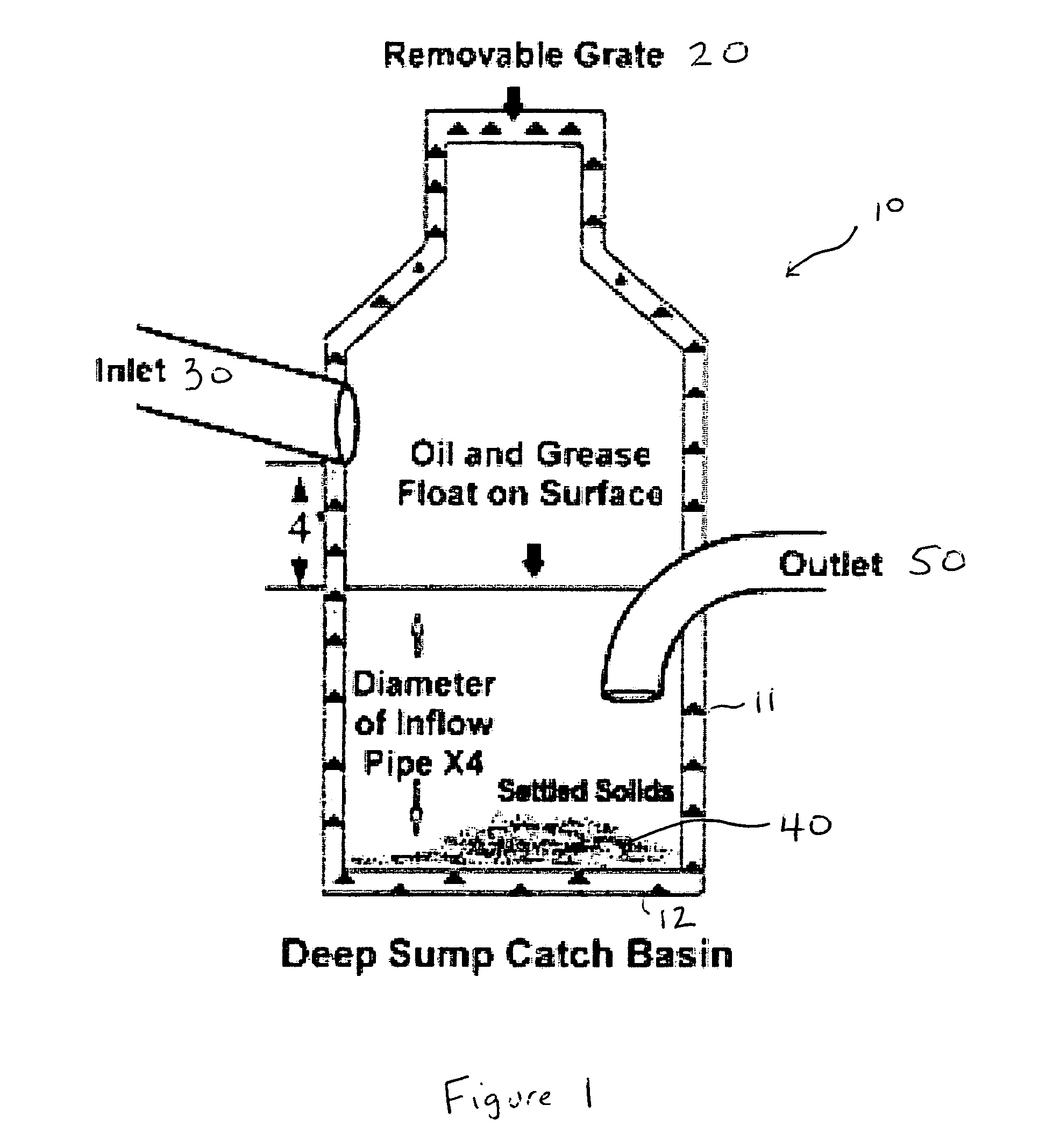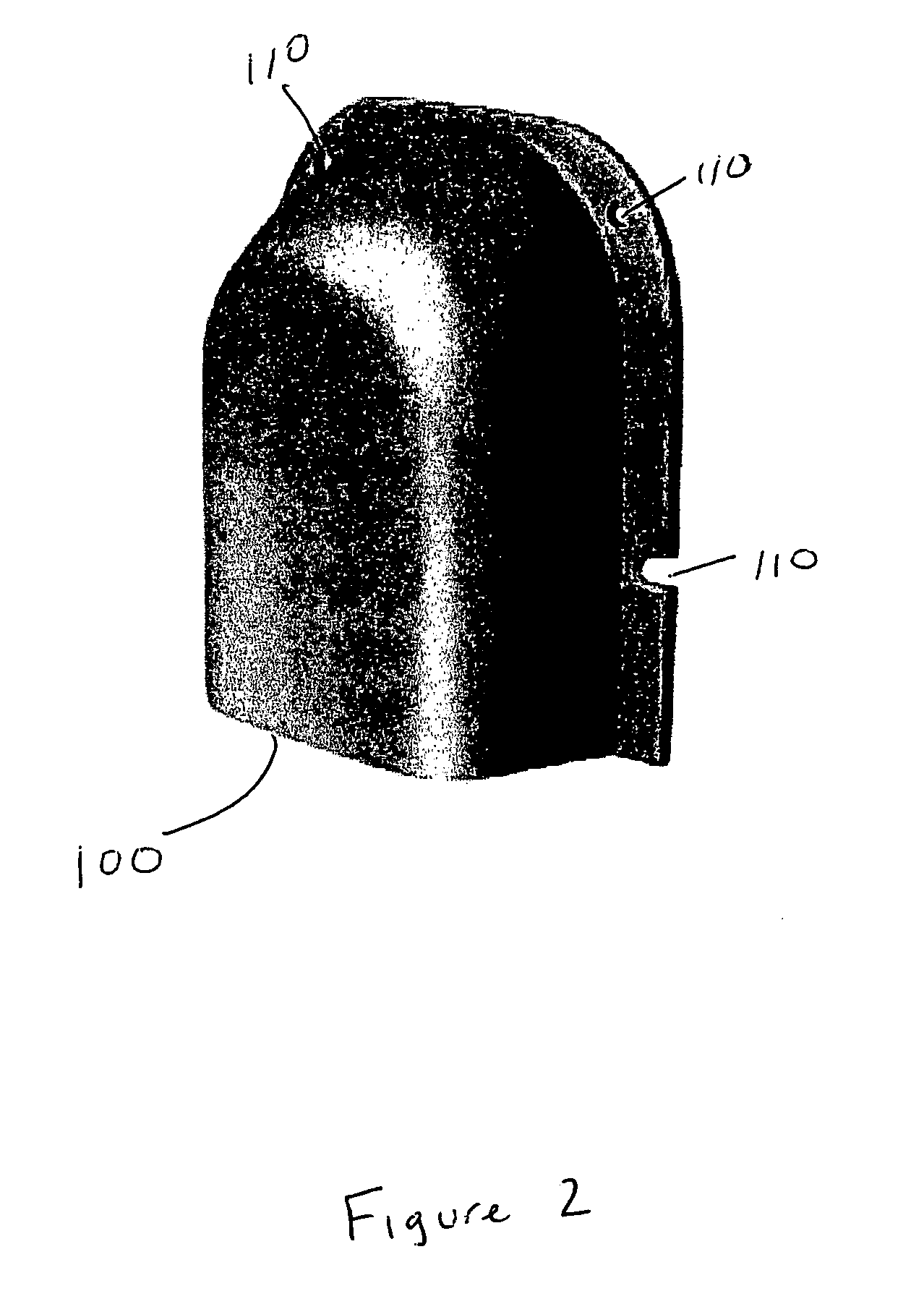Apparatus for removing dissolved and suspended contaminants from waste water
a technology of suspended contaminants and apparatus, which is applied in the direction of water cleaning, liquid displacement, separation processes, etc., can solve the problems of difficult time-consuming and difficult installation and maintenance of conventional catch basin traps for catch basins, and achieve the effect of blocking the passage of all waste water through the trap
- Summary
- Abstract
- Description
- Claims
- Application Information
AI Technical Summary
Benefits of technology
Problems solved by technology
Method used
Image
Examples
Embodiment Construction
[0020]Catch basin traps are well known in the industry, and used in most catch basins to arrest the flow of pollutants into drainpipes and sewer lines. FIG. 1 illustrates a typical catch basin 10. The basin 10 is typically constructed with concrete walls 11 and a concrete base 12. At the top, typically a grate 20 or other entry means is located. Wastewater, as well as litter, oil, dirt and other pollutants, pass through the grate 20 and into the catch basin 10. Optionally, additional entry means 30 are also located within the catch basin. Solid wastes 40 that are heavier than water settle at the bottom of the catch basin 10. However, oil and other low density pollutants float on the top of the wastewater within the catch basin. To prevent these pollutants from entering outlet 50, various techniques are used. As shown in FIG. 1, a pipe having a bend so as to have its opening below the surface of the wastewater can be used to prevent the floating pollutants from entering outlet 50.
[00...
PUM
| Property | Measurement | Unit |
|---|---|---|
| diameter | aaaaa | aaaaa |
| diameter | aaaaa | aaaaa |
| diameter | aaaaa | aaaaa |
Abstract
Description
Claims
Application Information
 Login to View More
Login to View More - R&D
- Intellectual Property
- Life Sciences
- Materials
- Tech Scout
- Unparalleled Data Quality
- Higher Quality Content
- 60% Fewer Hallucinations
Browse by: Latest US Patents, China's latest patents, Technical Efficacy Thesaurus, Application Domain, Technology Topic, Popular Technical Reports.
© 2025 PatSnap. All rights reserved.Legal|Privacy policy|Modern Slavery Act Transparency Statement|Sitemap|About US| Contact US: help@patsnap.com



